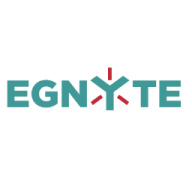

Egnyte and OpenText Content Management are both key players in the content management market. Egnyte has an edge in pricing and agility, but OpenText Content Management is preferred by enterprises with complex needs due to its robust features.
Features: Egnyte offers seamless file sharing, powerful collaboration tools, and ensures secure data access. OpenText Content Management stands out with its extensive document management capabilities, advanced security measures, and integration options with enterprise applications. A notable distinction is OpenText’s proficiency in managing complex document workflows, making it suitable for larger organizations with sophisticated requirements.
Room for Improvement: Egnyte could enhance its document management capabilities, improve integration with external applications, and expand its workflow management features. For OpenText, simplifying deployment processes, reducing costs for small businesses, and refining its user interface for better user experience are vital focus areas.
Ease of Deployment and Customer Service: Egnyte’s cloud-based model facilitates quick and intuitive deployment, complemented by reliable customer service. In contrast, OpenText Content Management's setup is more complex and time-consuming but offers extensive customer support tailored for larger scale implementations, demanding more initial time and resource investment.
Pricing and ROI: Egnyte provides competitive setup costs and faster ROI with lower initial investments, appealing to small and medium-sized businesses. OpenText Content Management, though demanding higher upfront costs, assures value with its comprehensive capabilities and long-term ROI, particularly valuable for enterprise-level operations prioritizing functionality over initial costs.


OpenText Content Management offers seamless document storage and advanced search features. Ideal for organizations needing integration with SAP and other applications, it enhances workflows while ensuring security and compliance across multiple platforms.
OpenText Content Management stands out with its advanced integration capabilities, allowing seamless connectivity with SAP and other applications. Its enhanced security and permission systems safeguard information, vital for industries like banking, utilities, and oil & gas. Metadata categorization and customizable workflows aid in managing complex document lifecycles. Although improvements in visibility and integration with external tools are needed, the platform provides powerful collaboration tools, enhancing productivity. Users leverage document retention and WebReports features to ensure compliance. Challenges with support, performance during peak times, and architecture complexity are noted. Automation features and analytics require enhancement, alongside more user-friendly SmartUI and record management functionalities.
What key features define OpenText Content Management?OpenText Content Management is widely utilized in sectors such as banking, utilities, and oil & gas. It is implemented to manage software development projects, engineering documents, and workflow automation. Organizations leverage OpenText Extended ECM for document lifecycle management, post-project archiving, and records retention. Integration with platforms like ServiceNow allows efficient handling of document management across global operations, supporting information governance, tax return compilation, and capital projects.
We monitor all Content Collaboration Platforms reviews to prevent fraudulent reviews and keep review quality high. We do not post reviews by company employees or direct competitors. We validate each review for authenticity via cross-reference with LinkedIn, and personal follow-up with the reviewer when necessary.